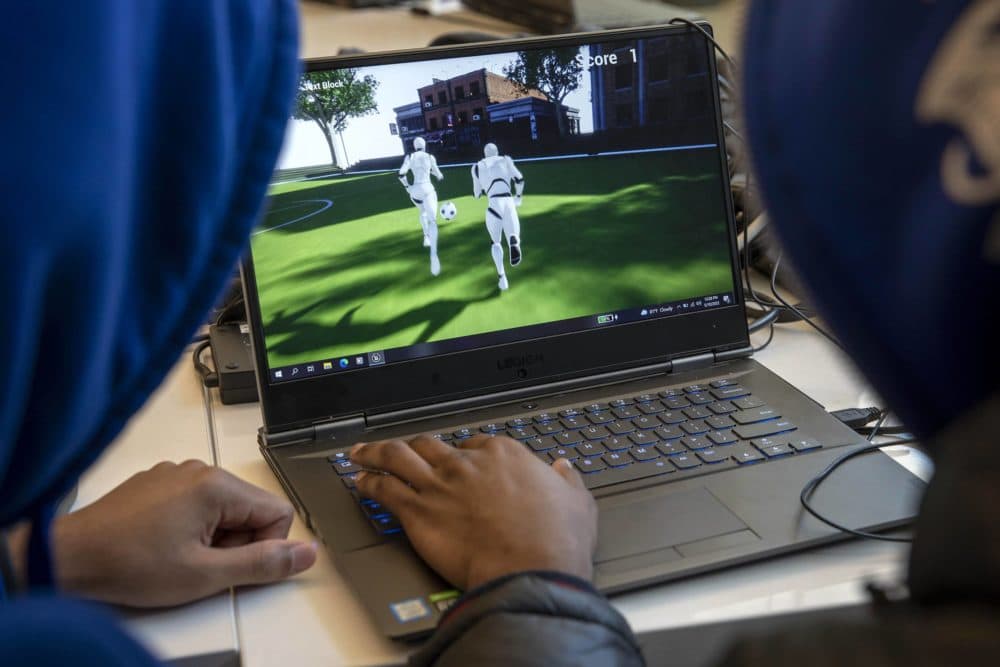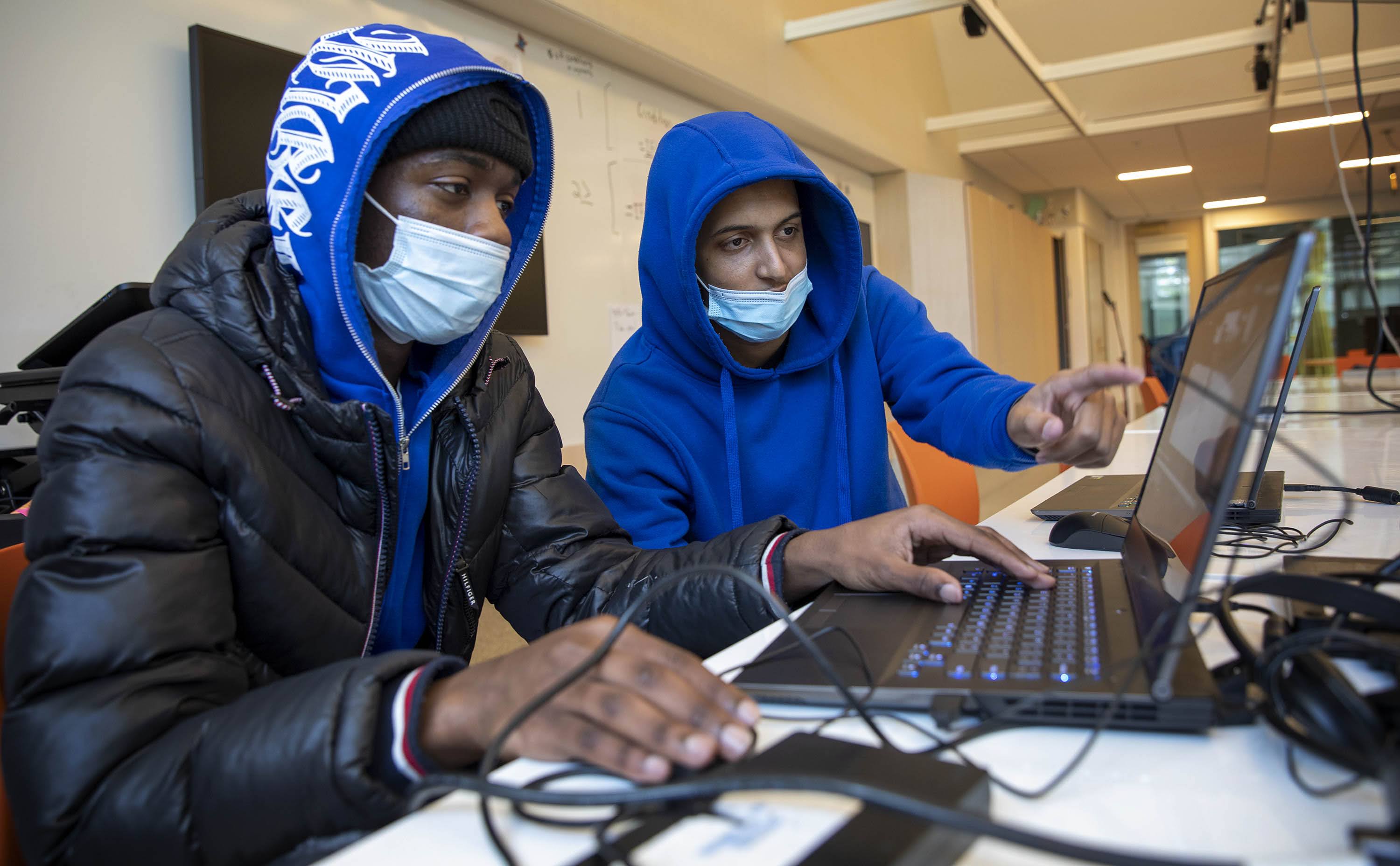
Re-engaging students in school after a prolonged period of remote instruction was an uphill battle for a lot of teachers this year. Staff at the Dearborn STEM Academy knew that struggle well.
“When we entered into the pandemic we were so, just, in our own world,” said English Language Arts teacher Greg Nelson.
Learning how to be in a classroom again was a tough adjustment, especially in the first weeks of the school year. But Nelson says a new video game design project that drew upon multiple subject areas unexpectedly turned things around for him and many of his students. It was — one could say — a game changer.
During a recent visit to the school, 17-year-old JR Murillo and 16-year-old Edson Miranda were eager to demonstrate a game they designed and produced this year.
The game opens with a short animation: A student has overslept which causes her and a friend to miss their bus for a trip. They try to catch up by car, but end up crashing on the side of a very dark road in a heavily wooded area.
The two friends become separated in the chaos and the player’s goal is to reunite the pair.
Miranda, who came up with the storyline, said the premise of the game is pretty straightforward.
“You’re mostly just trying to find your way around the forest,” he said.
Miranda and Murillo said they’re proud of the finished product. And they love watching other people play a game they helped create.
“It’s been very exciting seeing the passion people have for the result of our hard work,” said Murillo.
The students added that this unit in school was fun, which made learning the skills needed to build the game much easier — which is exactly what teachers at the Dearborn STEM Academy were hoping for.
“They’re learning how to use a computer to augment their creative process, to push themselves in their creative endeavors,” said Jon LoPorto, a computer science teacher.
He added that students are learning about more than just computer science with this project. Teachers have incorporated the unit into four different subject areas from art to English.
“Your game can only be as strong as the story on which it’s developed,” said Nelson, the English Language Arts teacher.

There’s a civics component too. Social studies teacher Melissa Mongogna-Tiffney helped her students recognize the cultural biases built into many of today’s commercial video games. She pushed her students to think of ways to diversify the characters audiences see featured in games.
“We encourage our students to look at different identities other than the ones they’re a part of and [to] do interviews with people of different identities to figure out how they’d like to be represented in video games,” said Mongogna-Tiffney.
The video game design program was created shortly before the Covid-19 pandemic for the school’s computer science students. But its implementation was disrupted when school buildings across the state closed down in 2020. All the group work was hard to do when school went remote.
When class schedules returned to normal this year, the video game project made a comeback. It helped engage students far beyond what teachers expected in this first year back from remote learning.
“There was a feeling that you’re still part of something,” LoPorto said.
He thinks the students leveled up their engagement, in part, because of the personal connections they made in their project groups — and a dependence on collaboration. For instance, an absent group member could mean a missing element in the game’s structure.
“They need you,” said LoPorto. “What happens if you don’t show up, and they’re looking for some asset that needs to be put in the game?”

It’s a sentiment several of LoPorto’s students share.
“When you work with people it’s easier to get things done,” said 17-year-old Miguel Tavares. “When you’re working with someone you’ve got someone to help you and support you.”
The school’s teachers say the video game project also helped to restore a sense of community among instructors because it required them to coordinate lessons with each other. Nelson said, just like his students, he’s learning how much teamwork can make any effort easier.
“We’re all coming back [to our roles] next year,” he said. “That is not the case across the district, but this team depends on one another.”

Be the first to comment